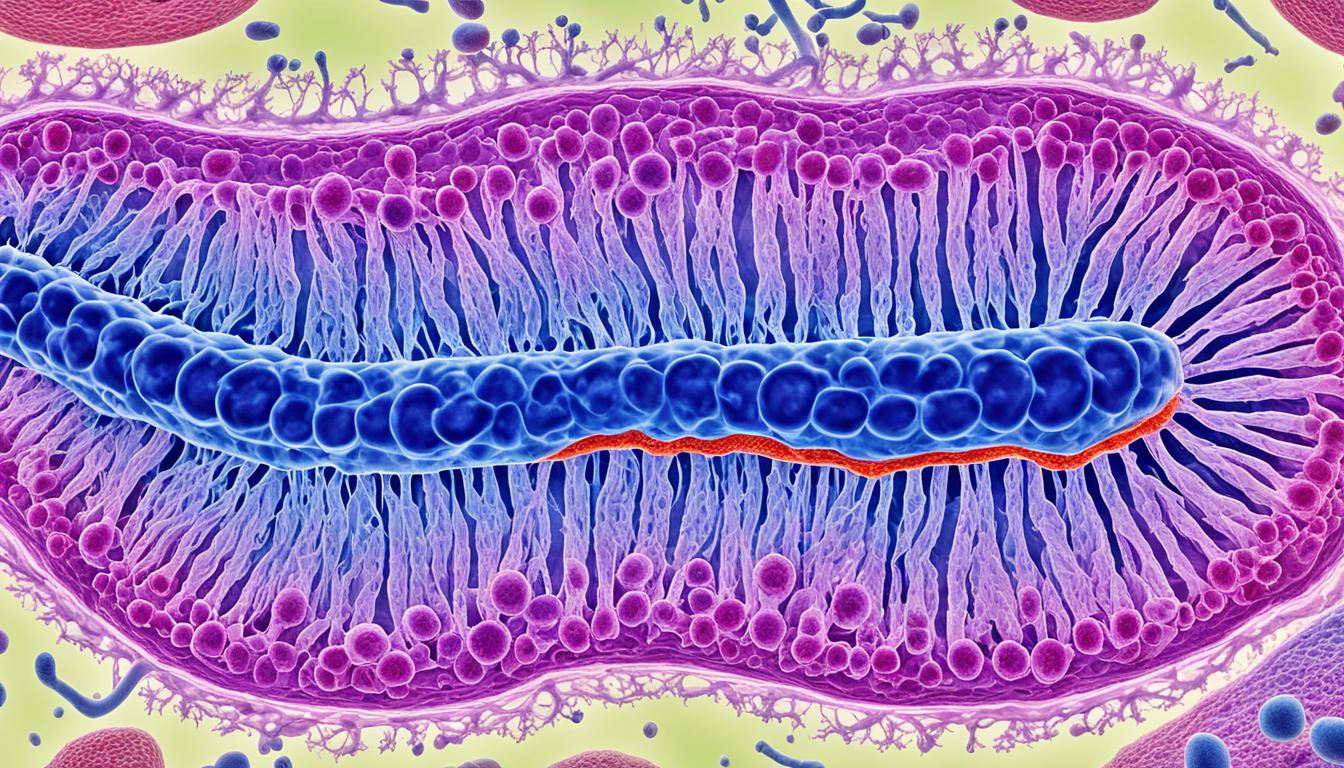Whipple’s disease is rare but serious. It’s caused by the bacterium Tropheryma whipplei. The bacterium mainly affects the gut causing diarrhea, weight loss, and pain.
It can also hurt other parts of the body. This causes a variety of symptoms. The disease is not easy to diagnose at first because its signs can look like other illnesses.
Doctors often use a small bowel biopsy and a special test (PCR) to confirm Whipple’s disease. It’s important to start treatment quickly. If not treated, it can be deadly.
The usual treatment is antibiotics. But, sometimes, they might not work. So now, doctors are studying other options, like stem cell therapy. This new type of treatment may help repair the gut better.
Key Takeaways:
- Whipple’s disease affects the gut and can cause serious problems elsewhere in the body.
- Its symptoms are similar to other illnesses, making it hard to diagnose without tests.
- A biopsy and a specific test are often used to confirm Whipple’s disease.
- Early and right treatment with antibiotics is vital.
- Stem cell treatment is being researched as a possible new way to fight the disease.
Symptoms and Diagnosis of Whipple’s Disease
Whipple’s disease shows up with many different bodily signs. Most often, people will notice problems in their stomach and intestines. Symptoms like diarrhea, stomach pain, and losing weight are common.
Whipple’s disease can also lead to tiredness, not having enough red blood cells (anemia), and trouble with your brain or movement. This can include problems with thinking and how you move.
Finding out if someone has Whipple’s disease might not always be easy. This is especially true if they don’t have the usual stomach and bowel symptoms. Still, getting a clear diagnosis is key to starting proper care.
To confirm Whipple’s disease, doctors may need to take a small piece of tissue from your small intestine. They look at this under a microscope. Sometimes, though, this test doesn’t show any issues, which can be a challenge.
In more recent times, a test called polymerase chain reaction (PCR) has become very helpful for diagnosis. This test looks for the DNA of Tropheryma whipplei, the bacteria behind Whipple’s. It can make finding out for sure faster and more accurate.
Keeping a close eye on how treatment is working is very important. This is because Whipple’s disease can come back even after treatment. Making sure the treatment plan is working well over time is a must.
Symptoms of Whipple’s Disease
- Diarrhea
- Abdominal pain
- Weight loss
- Joint pain
- Fatigue
- Anemia
- Neurological symptoms
If you find yourself with any of these symptoms, it’s vital to see a doctor. They can properly check and find out what’s going on.
| Symptoms | Frequency |
|---|---|
| Diarrhea | Common |
| Abdominal pain | Common |
| Weight loss | Common |
| Joint pain | Common |
| Fatigue | Common |
| Anemia | Common |
| Neurological symptoms | Less common |
Causes and Potential Therapies for Whipple’s Disease
Whipple’s disease comes from a bacterium called Tropheryma whipplei. The exact way it spreads is not fully understood yet. Knowing how to fight this illness is crucial.
Treatment usually involves using different antibiotics together. This method works well for many, lowering the chance of the disease coming back. But not all respond as hoped to these drugs. So, scientists are looking into other ways to help, like using stem cells.
Stem cell therapy is showing great potential. It aims to help fix the gut damage from the infection. While it’s still being studied, this new approach gives hope for better treatments for Whipple’s disease.

